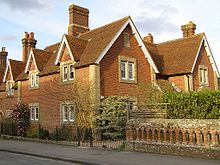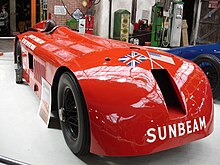Beaulieu, Hampshire
This article needs additional citations for verification. (December 2012) |
| Beaulieu | |
|---|---|
 Palace House | |
| Population | 829 (2001 Census) |
| OS grid reference | SU385025 |
| • London | 92.6mi |
| District | |
| Shire county | |
| Region | |
| Country | England |
| Sovereign state | United Kingdom |
| Post town | Brockenhurst |
| Postcode district | SO42 |
| Dialling code | 01590 |
| Police | Hampshire and Isle of Wight |
| Fire | Hampshire and Isle of Wight |
| Ambulance | South Central |
| UK Parliament | |
Beaulieu /ˈbjuːli/ is a small village located on the south eastern edge of the New Forest national park in Hampshire, England, and home to both Palace House and the British National Motor Museum.
History

Beaulieu village has remained largely unspoilt by progress, and is a favourite tourist stop for visitors to the New Forest, and also for birders seeking local specialities like Dartford warbler, European honey buzzard and hobby.
Palace House was featured in the 2005 comedy-drama film Mrs. Palfrey at the Claremont starring Joan Plowright and Rupert Friend.
Transport
The nearest railway station is Beaulieu Road, about 4 miles (6.4 km) away on the London-Weymouth main line. While previously this station had an infrequent service, there are now some 20 trains per day stopping here.
Wilts & Dorset bus service 112 serves the village on its way between Hythe and Lymington. In summer, Beaulieu is served by the New Forest Tour, an hourly open-top bus service.
Palace House

Palace House (not to be confused with the Palace of Beaulieu in Essex), which overlooks the village from across Beaulieu River, began in 1204 as the gatehouse to Beaulieu Abbey, and has been the ancestral home of a branch of the Montagu family since 1538, when it was bought from the Crown following the Dissolution of the Monasteries by Henry VIII.
The house was extended in the 16th century, and again in the 19th century, and is today a fine example of a Gothic country house.
Although still home to the current Lord and Lady Montagu, parts of the house and gardens are open daily to the public. It is a member of the Treasure Houses of England consortium.
Museum

The village is also home to the British National Motor Museum.
The museum was opened in 1952 as the Montagu Motor Museum and became a charitable trust in 1972. It contains an important collection of historic motor vehicles, including four world land speed record holders:
- Sir Malcolm Campbell's 1920 Sunbeam 350hp
- His son Donald Campbell's 1961 Bluebird-Proteus CN7
- The 1927 Sunbeam 1000hp (the first motor car to reach 200 miles per hour (322 km/h))
- The 1929 Irving-Napier Special 'Golden Arrow'.
The last two were both driven by Major Henry Segrave.
Beaulieu Jazz Festival
| Beaulieu Jazz Festival | |
|---|---|
| Genre | Jazz |
| Location(s) | Beaulieu |
| Years active | 1956-1961 |
In the late 1950s Beaulieu was the surprising location for one of Britain's first experiments in pop festival culture, with the annual Beaulieu Jazz Festival, which quickly expanded to become a significant event in the burgeoning jazz and youth pop music scene of the period.
Camping overnight, a rural invasion, eccentric dress, wild music and sometimes wilder behaviour — these now familiar features of pop festival happened at Beaulieu each summer, culminating in the so-called 'Battle of Beaulieu' at the 1960 festival, when rival gangs of modern and traditional jazz fans indulged in a spot of what sociologists went on to call 'subcultural contestation'.[1]
See also
References
- ^ McKay 2004, 2005
Bibliography
- Lord Montagu of Beaulieu (2000) Wheels Within Wheels: An Unconventional Life. London: Weidenfeld and Nicolson.
- George McKay (2004) '"Unsafe things like youth and jazz": Beaulieu Jazz Festivals (1956–61) and the origins of pop festival culture in Britain'. In Andy Bennett, ed. Remembering Woodstock (Aldershot: Ashgate).
- George McKay (2005) Circular Breathing: The Cultural Politics of Jazz in Britain, chapter one 'New Orleans jazz, protest (Aldermaston) and carnival (Beaulieu [Jazz Festival 1956-61])'. Durham NC: Duke University Press.
External links
- Beaulieu Palace House webpage
- New Forest Community Media - A not-for-profit media site serving the National Park

